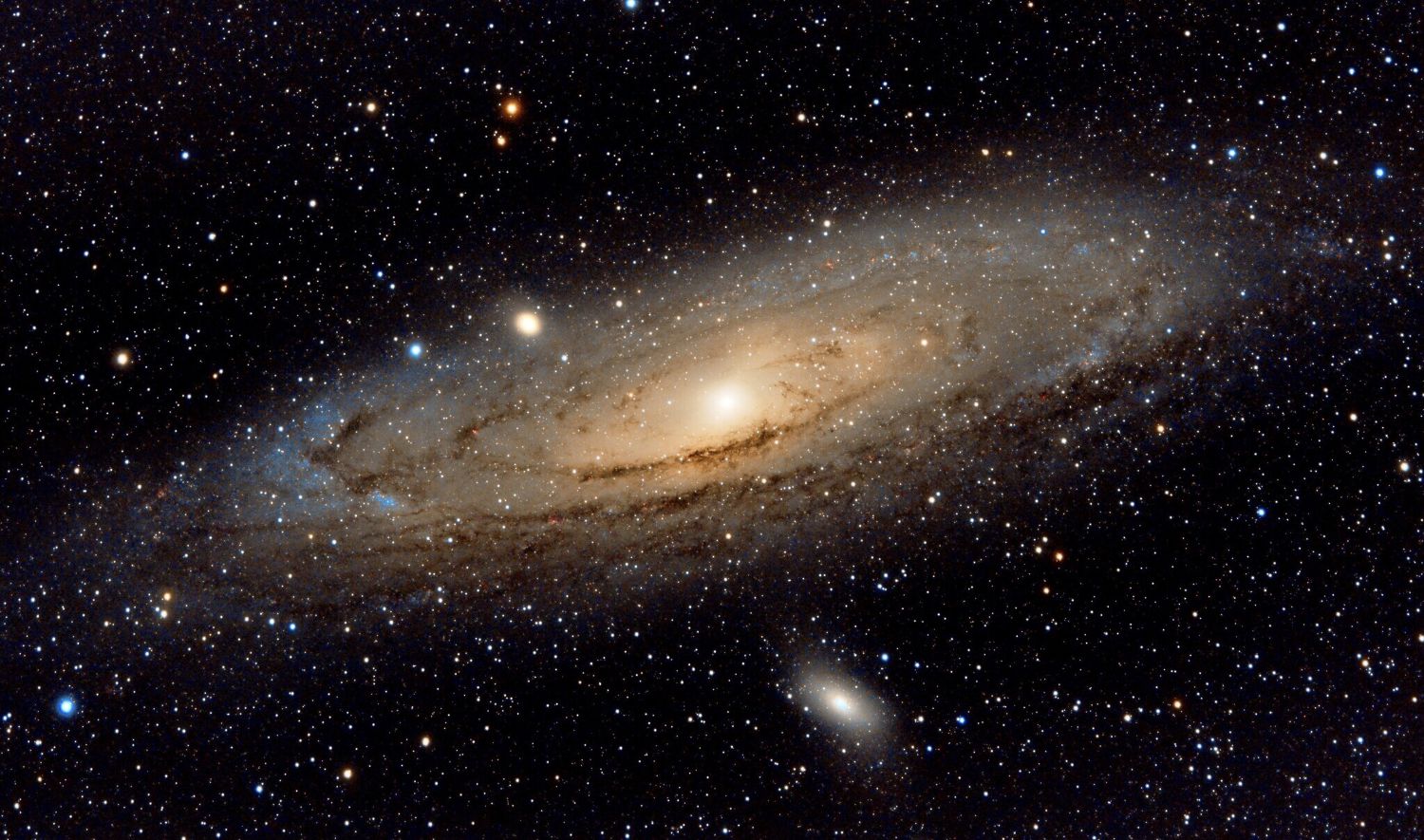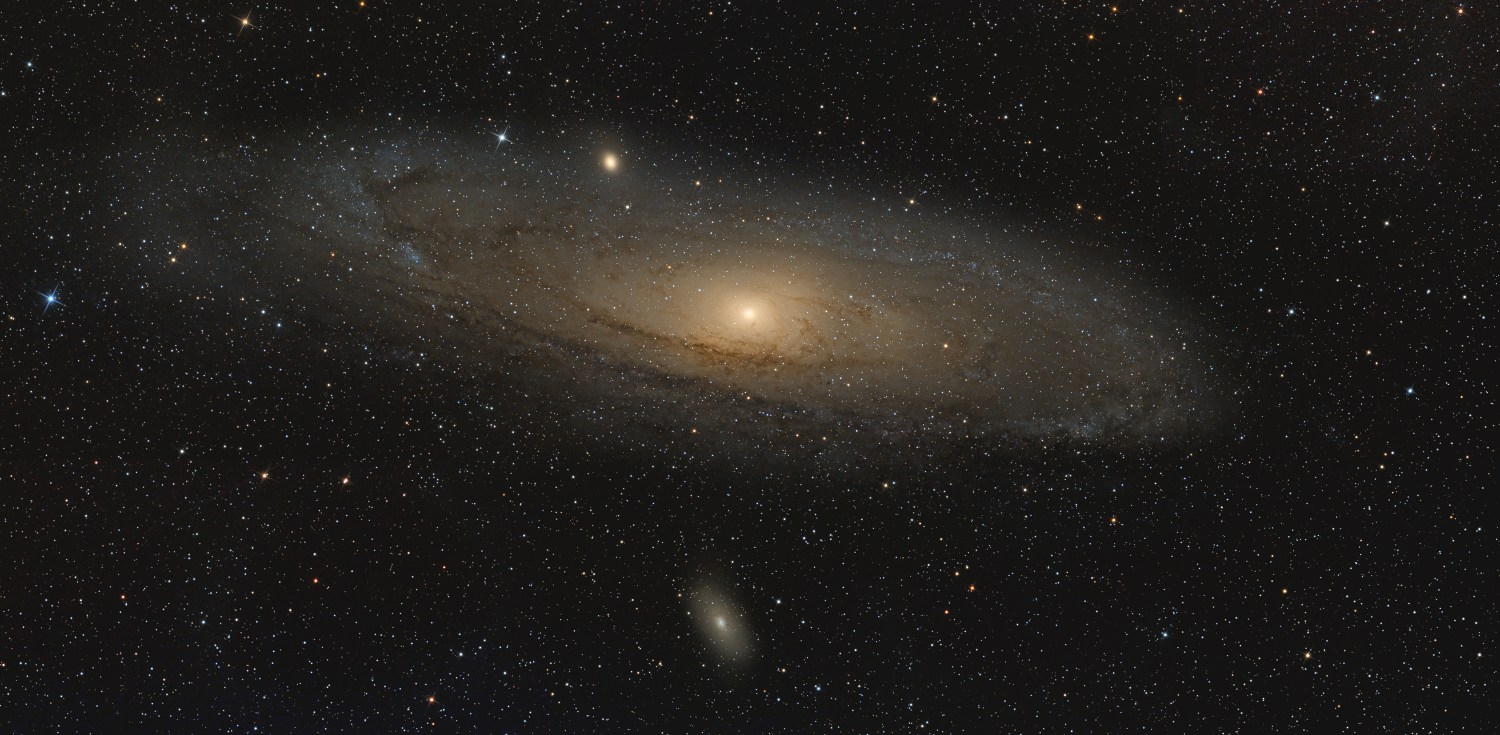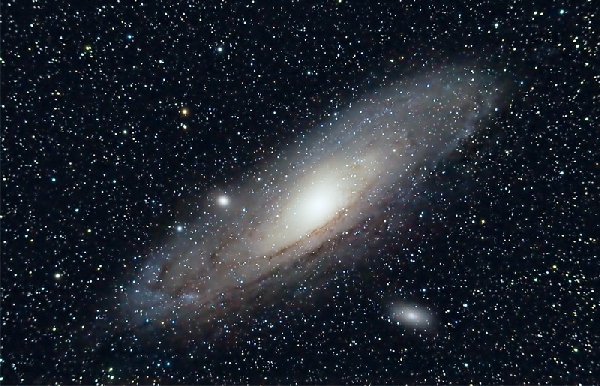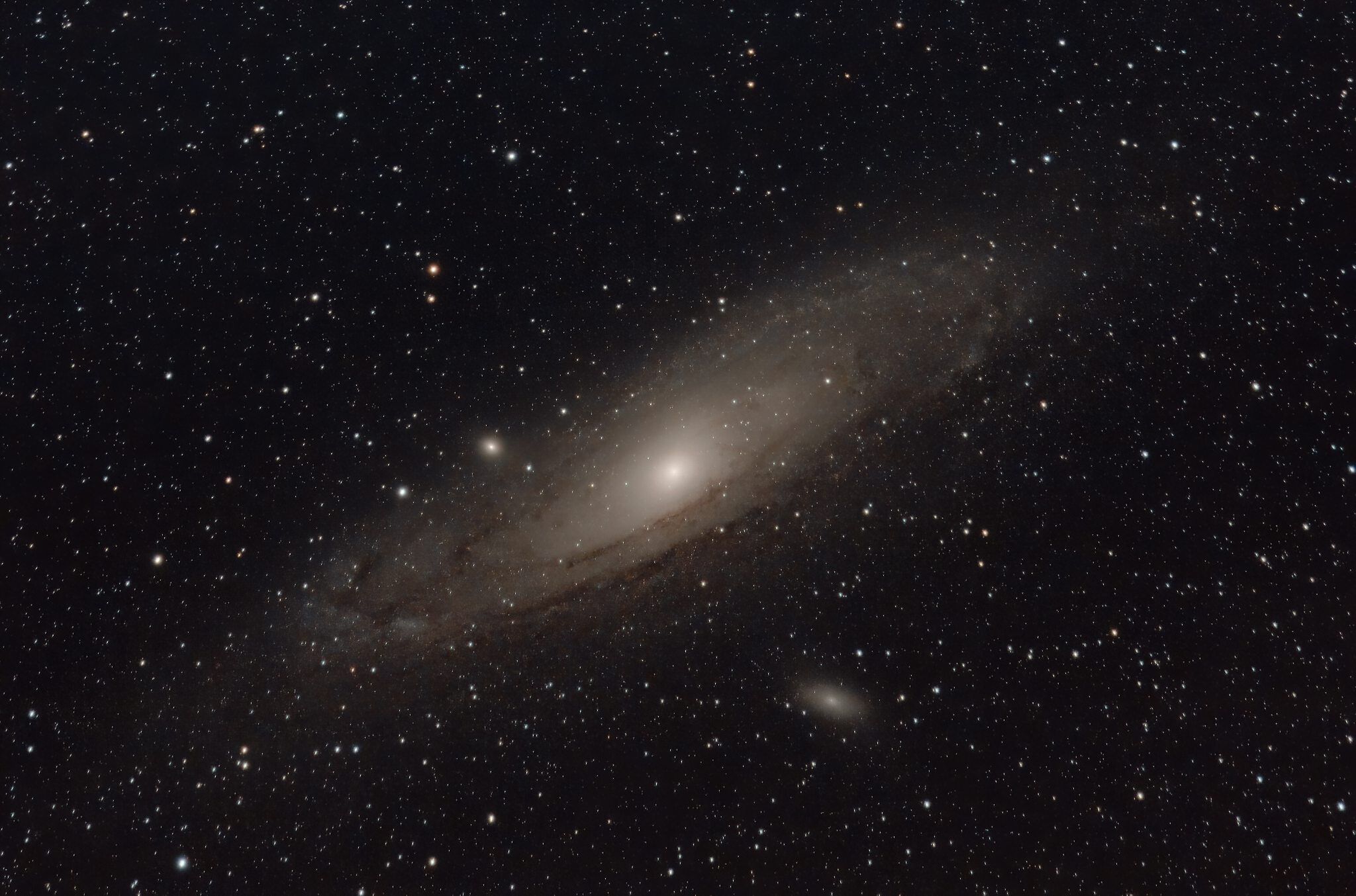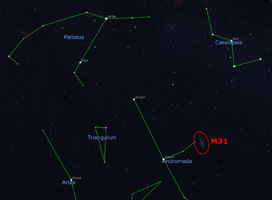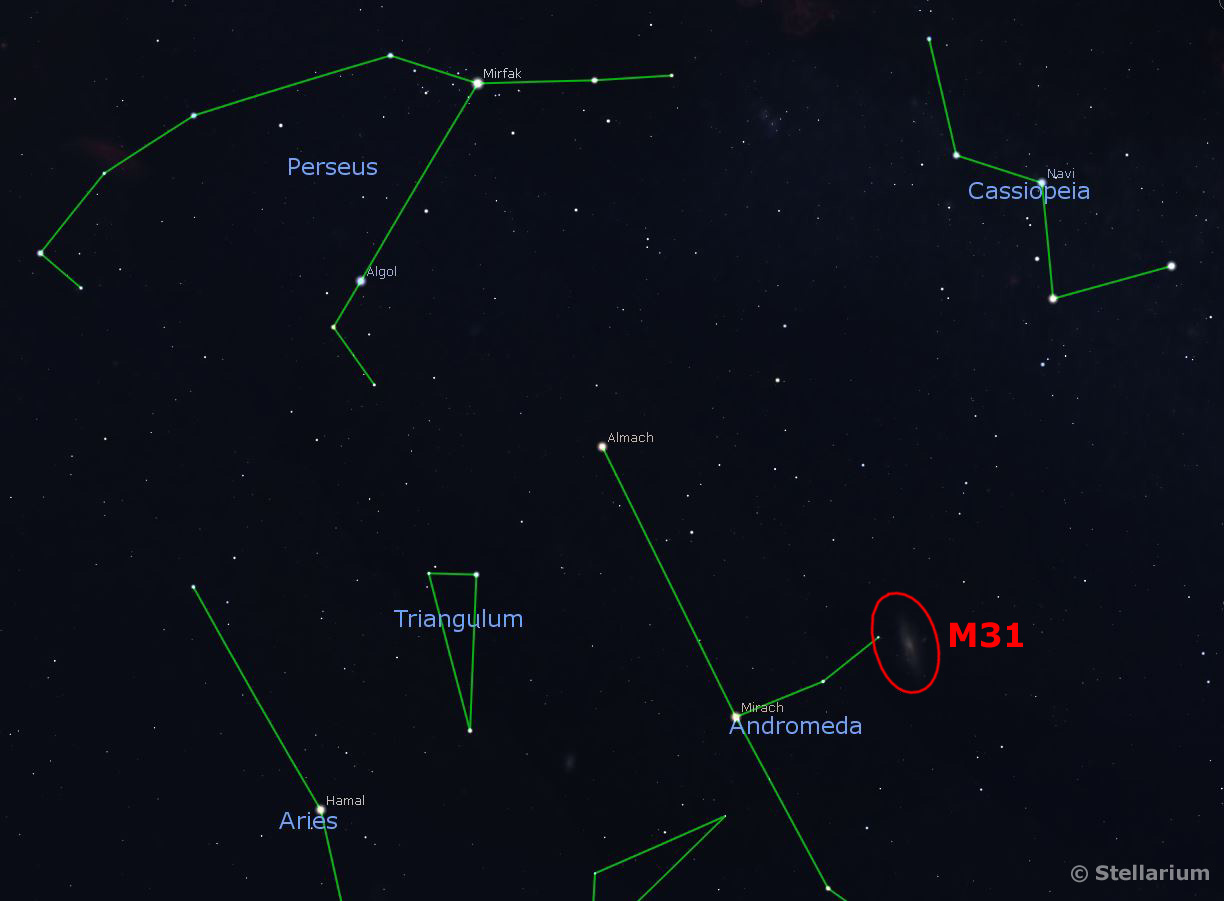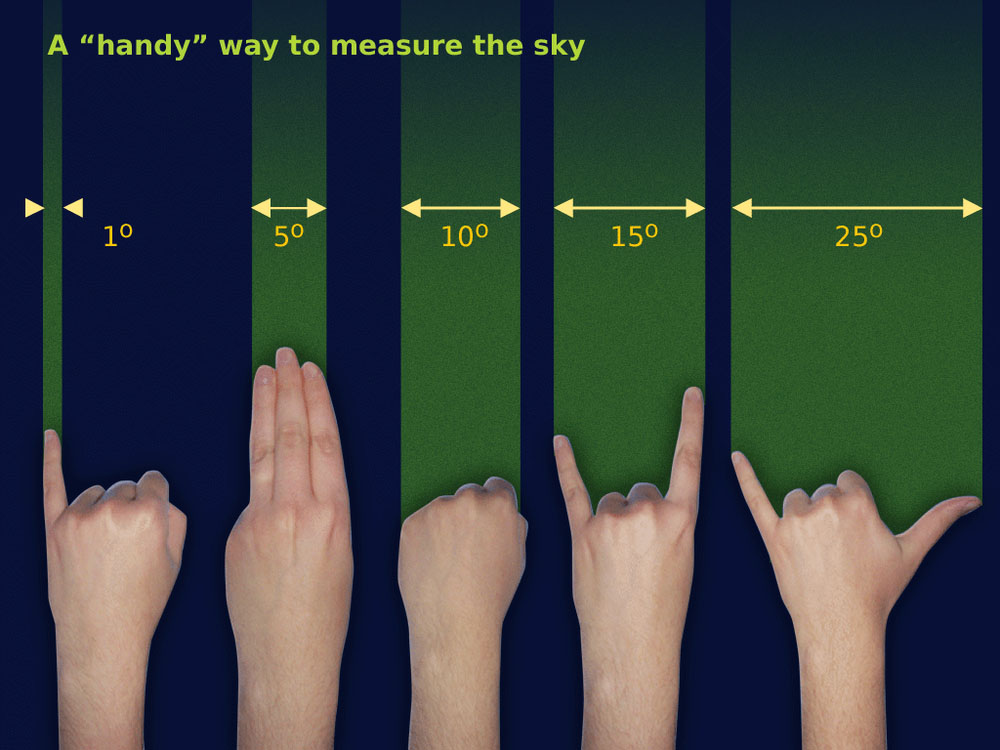Information...
The Andromeda Galaxy (Messier M31) is a large Spiral galaxy approximately 2.5 million light-years away from Earth. It's estimated to contain approx 1 trillion stars (about twice that of our own Milky Way galaxy) and is the closest major galaxy in our local group.
In the past M31 is thought to have interacted with the nearby M33 Triangulum Galaxy and from spectral analysis is known to be travelling towards us at about 300 km/s. It is due to collide with the Milky Way in 4.5 billion years.
Also in the picture you can see M110 (bottom right) & M32 (middle left), two dwarf elliptical galaxies that are satellites of M31.
M31 has an apparent magnitude of +3.44.
For more info. see the Wikipedia entry.
